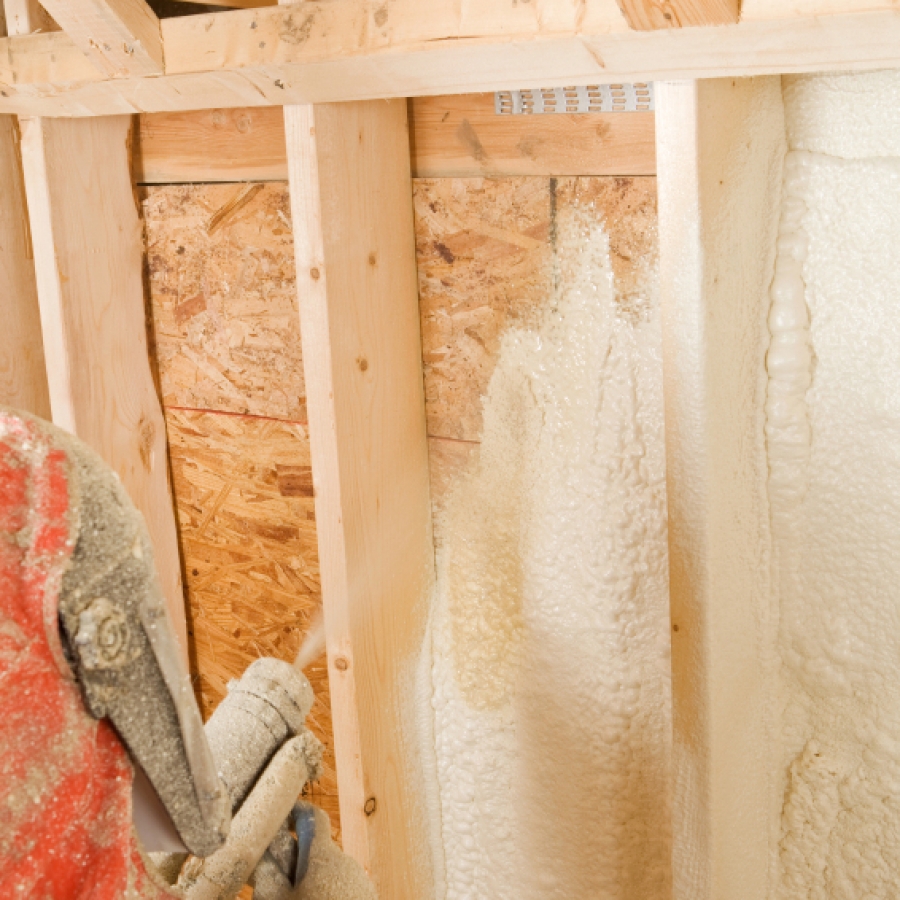Sprayed-Foam and Foamed-In-Place Insulation
Liquid foam insulation materials can be sprayed, foamed-in-place, injected, or poured. Their ability to fill even the smallest cavities gives them twice the R-value per inch than traditional batt insulation.

Topic Summary
Types of Liquid Foam Insulation
Today, some foam insulation consists of materials similar to those found in pillows and mattresses. Also, most foam materials can now be used with foaming agents that don't use chlorofluorocarbons (CFCs) or hydrochlorofluorocarbons (HCFCs), which are harmful to the earth's ozone layer.
Some types of available liquid foam insulation materials include these:
Some less common types include Icynene foam and Tripolymer foam. Icynene foam can be either sprayed or injected, which makes it the most versatile. It also has good resistance to both air and water intrusion. Tripolymer foam — a water-soluble foam — is injected into wall cavities. It has excellent resistance to fire and air intrusion.
Urea-formaldehyde (UF) foam was used in homes during the 1970s and early 1980s. It is no longer available for residential use because of health-related concerns.
Installation
Liquid foam insulation — combined with a foaming agent — can be applied using small spray containers or in larger quantities as a pressure-sprayed (foamed-in-place) product. Both types expand and harden as the mixture cures. They also conform to the shape of the cavity, filling and sealing it thoroughly.
Slow-curing liquid foams are also available. These foams are designed to flow over obstructions before expanding and curing, and they are often used for empty wall cavities in existing buildings. There are also liquid foam materials that can be poured from a container.
Installation of most types of liquid foam insulation requires special equipment and certification. Therefore, you'll probably want a certified insulation installer to do it.
Following installation, an approved thermal barrier — such as drywall — must cover all foam materials. Also, some building codes don't recognize sprayed foam insulation as a vapor barrier, so installation might require an additional air barrier, like polyethylene or some other vapor retarder.
Costs
Liquid foam insulation products and installation usually cost more than traditional batt insulation. However, liquid foam insulation also forms an air barrier. This can help eliminate some of the other costs and tasks associated with weatherizing a home, such as caulking, applying housewrap and vapor barrier, and taping joints. When building a new home, this type of insulation can also help reduce construction time and the number of specialized contractors, which saves money.
Article source: The U.S. Department of Energy’s Office of Energy Efficiency and Renewable Energy (EERE). For the most up-to-date information please visit the EERE website.



